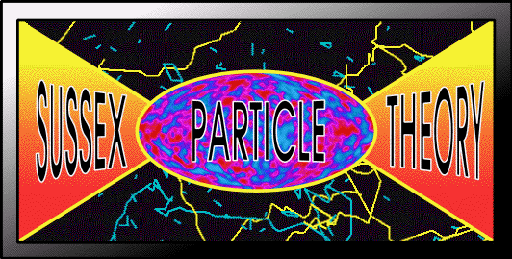
(a) Centre for Theoretical Physics, University of Sussex
(b) Département de Physique Théorique, Université de Genève
(c) High Performance Computing Centre, University of Southampton

In the first moments of the Big Bang -- perhaps about 10-36 seconds after the beginning -- immensely thin and massive line-like objects may have condensed out of the hot plasma filling the Universe: cosmic strings.
Strings are as small again in cross section to the nucleus of a Hydrogen atom as the nucleus is to an apple.
This is about the mass of the whole of Britain down to a depth of 10 km, all packed in to one metre of string.
Cosmic strings have no ends, but they may come in any size loop, even up to and beyond the size of the visible Universe, 1018 m.
Formed in a tangled mass, the strings would have quickly started to straighten out at speeds close to that of light, under the influence of their enormous tension. Remnants would still be around today: perhaps a few lengths stretching across the the visible Universe, strings so large that they have not had time to disappear, and a debris of smaller oscillating loops.
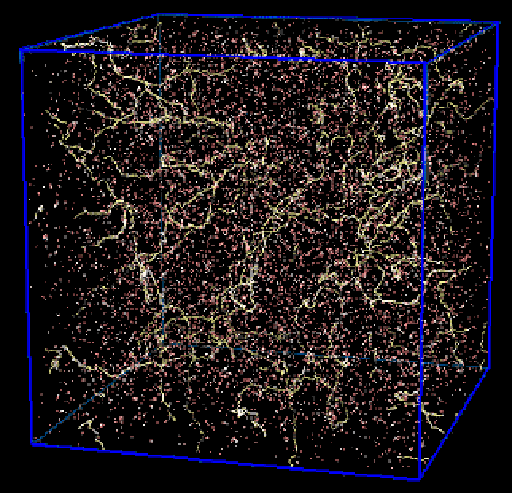
A network of cosmic strings near the end of a simulation.
Finding evidence for cosmic strings would be a major step in tracing our knowledge back towards the origin of the Universe. Our methods are necessarily indirect, as strings are so thin they pass right through ordinary matter. The only way we can hope to find them is through their gravitational fields. Both light and matter are deflected as they travel past a string, so as the string whips around a characteristic pattern of distortions is left behind.
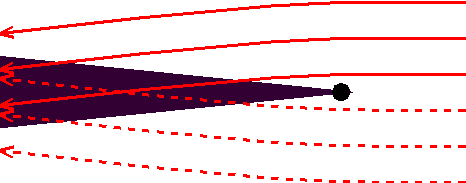
Deflection of particles as they move past a cosmic string
(the black dot in the centre). A ``wake'' builds up behind the string.
Perhaps the best bet for detecting a string comes from mapping the temperature pattern of the microwave radiation which comes to us from all directions in the sky. In the next few years this will be done with unprecedented precision by two satellites, MAP and COBRAS/SAMBA.
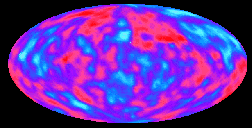
A simulated all-sky map of the small fluctuations in the
intensity
of the microwave radiation caused by cosmic strings.
We are using the Massively Parallel Processor resources supplied by the High Performance Computing Initiative to simulate the evolution of a network of strings in the early Universe. We generate a box of strings as it might have appeared shortly after they were formed, and let them go according to their laws of motion. When two strings cross, they reconnect, exchanging partners, which allows the formation of small loops.
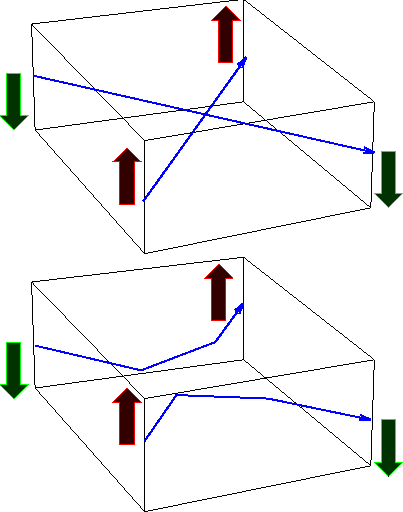
Two strings crossing. As they pass through each other
they reconnect the other way around.
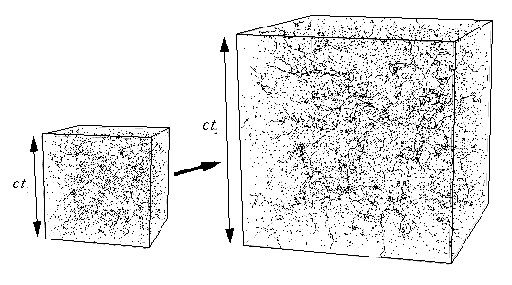
Self-similarity in cosmic string simulations. The characteristic
scale of the network increases in proportion to the size of the
visible Universe (the time t multiplied by the speed of light c).
In these simulations, we can clearly see evidence of self-similar behaviour emerging: the network has a characteristic length scale which grows with time, but it is statistically the same at all times when quantities are measured relative to that scale. Establishing self-similarity is crucial to the success of the cosmic string scenario. Simulations are vital for making detailed predictions of the observational effects of strings: the need for long runs with large networks means that we need MPP resources to progress.